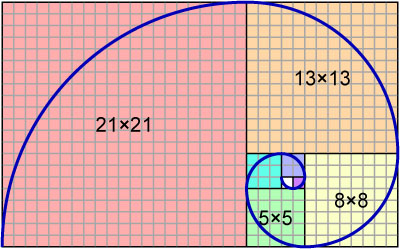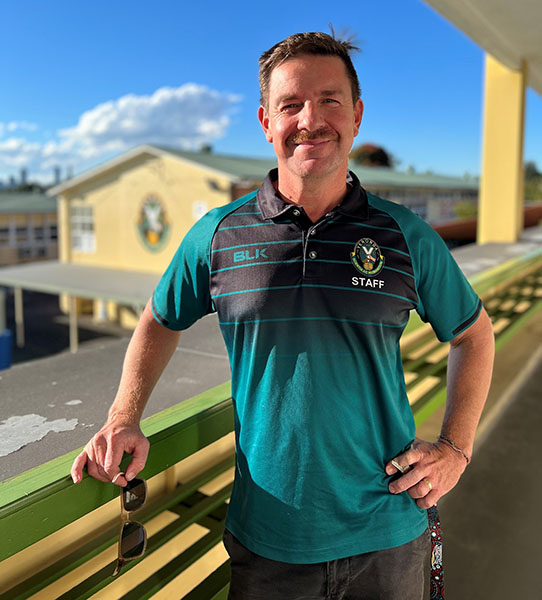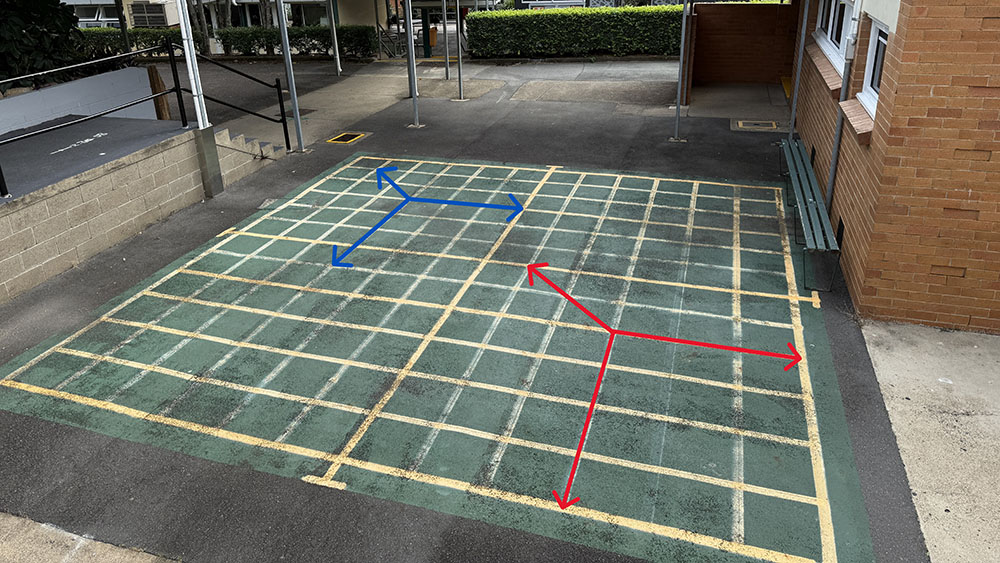 Fibonacci spiral, image licensed under Creative Commons Zero (CC0).
Fibonacci spiral, image licensed under Creative Commons Zero (CC0).
Art and maths can seem worlds apart. However, as far back in history as ancient Greece, people were studying the beauty of the golden ratio—a mathematical proportion found in nature, art and design, known for its visually harmonious balance.
Eventually dubbed the 'divine proportion' by Italian mathematician Luca Pacioli, this concept can be seen in famous artworks from the likes of Leonardo da Vinci and Vincent Van Gogh.
Modern artists and designers still use maths to create beauty, like the geometric shapes and clever camera angles in Gotye's Somebody That I Used to Know music video.
But what about flipping the equation? Can art be used to teach maths?
At Yeronga State High School (SHS), the answer is a resounding yes.
A new kind of maths classroom

Ben Habermehl, Head of Mathematics at Yeronga SHS, is passionate about making maths more engaging than it was in his schooling years.
'Growing up with traditional schooling where maths was "sit still and copy this down". I wanted to see kids get excited about learning maths,' says Ben.
In 2019, working under the guidance of Griffith University and the y-connect team with funding from the Department of Education, Ben began exploring how movement and art could be used to teach maths concepts in new ways.
One of the early projects involved working with a choreographer to design lessons that used dance to show mathematical ideas. Ribbons were used to show parallel lines, dancers formed shapes and angles and students could physically connect with concepts like co-interior angles in action.
'Seeing students from all different backgrounds light up as they learned maths through movement was amazing,' says Ben.
'And when it came time for exams, students would sit there with their fingers dancing on the page, remembering the moves they'd seen.'
Building on the program
Since then, Ben and his team have continued to build on the idea of learning maths through hands-on, active experiences, helping students connect with the subject in practical and engaging ways. Step into his classroom, and it's clear—maths looks a little different here. See examples below.
Our geometry lessons use real 3D shapes and VR
Students use snap-together plastic blocks and plates to build 3D shapes, then fold them into flat surfaces to explore faces, edges and vertices. They also use virtual reality headsets to explore and manipulate shapes in a digital space, which helps them develop spatial reasoning and the ability to visualise shapes in their minds.
We explore angles by moving to the music
Using tape to mark out parallel and transversal lines on the floor, students move their feet to different points along the lines. Timing their moves to a song—like Uptown Funk—as they recall the names and properties of the angles. The physical movement also helps with focus and memory.
We do linear algebra outdoors
A large grid is painted on the concrete outside, where students take on the role of coordinate points and link together to create lines and shapes. This physical activity helps them understand linear relationships and picture how equations work on a graph.

We create fractals with paper
Students fold and cut paper to create repeating patterns resembling the Sierpinski triangle, exploring the maths behind ratios, fractions and patterns. It's a creative way to introduce the idea of fractals and mathematical beauty.

Students say this hands-on approach makes learning easier and more enjoyable.
'Working 1-on-1 with the teacher, having flexible seating, and moving around the room really helped keep my energy levels up,' says Milla.
'The hands-on manipulatives made learning fun and helped us better understand concepts like area and volume. Drawing Pythagoras trees didn't even feel like work—it was engaging and creative.'
Maths: The universal language
Yeronga SHS is proudly multicultural, with over 80 languages spoken and around half of students having English as a second language. In a setting like this, maths can become a universal language.
'We run the reSolve activities which encourages the idea of low-floor, high-ceiling lessons,' says Ben.
'That means we make sure there are multiple entry points, so every student can access the content at their level.
'Some students have high level maths skills but are still learning English; others are still developing abilities on both fronts, so we use a variety of ways to engage and teach. Visual or hands-on lessons help a lot.'
It's a strategy that's paying off. The school has seen year-on-year improvement in maths results and has consistently achieved Gold Medal status from the Queensland Association of Mathematics Teachers.
More than numbers
While content is key, Ben believes supporting student wellbeing is just as essential to learning.
'Relationships are everything,' he says.
'Students need to feel safe and calm before they can learn. I check in with them and ensure my pre-service teachers do the same.'
Principal Mr Orford says Ben's impact is felt across the whole school community.
'We've seen continual improvement in student outcomes, and that's because of Ben and his team. But more than that, Ben is a trusted part of our community,' he says.
'Parents and students know they can come to him for help. He's always there running programs, engaging kids, making maths something they want to learn.'
Ben also runs a program for local Year 5 and 6 students, giving them a head start on maths through lessons using compasses, spatial reasoning tasks and creative design.
It's just one more way he's helping build a strong foundation in maths and helping future students feel confident before they even start high school.